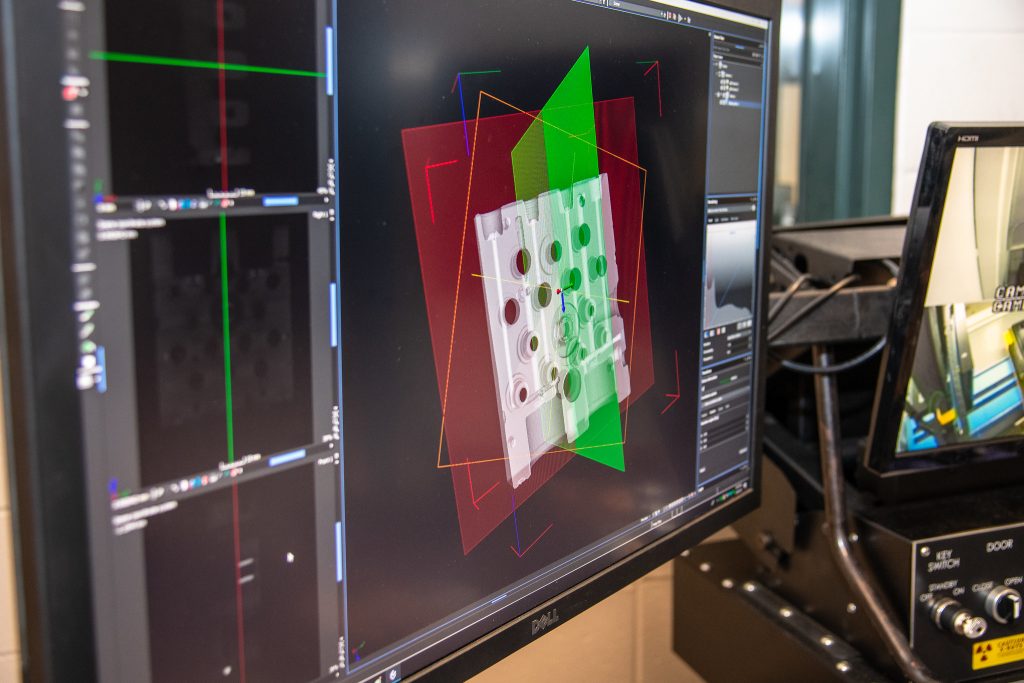The Center for Additive Manufacturing at Auburn University, Alabama, is now home to a $1.5 million x-ray CT system. The new machine is to be applied to the nondestructive testing (NDT) of 3D printed parts, essential to the university’s programs to produce “mission critical” parts for aerospace and aviation industries.
The system was acquired with a grant from the National Institute of Standards and Technology (NIST). Professor Bart Prorok, Director of Auburn’s Analytical Microscopy Center, is principal investigator on the NIST grant, and has called the x-ray CT system “a real game changer” for the center’s additive manufacturing research.
“With this new system,” Professor Prorok explains, “we can take two-dimensional x-ray pictures of a metal structure for real-time process monitoring or a series of 2D images in 360 degrees of rotation that are then reconstructed into a 3D representation of the build.”
Speaking with 3D Printing Industry, Professor Prorok shares more information about the new system, and the projects it will be applied to at Auburn.
NDT and process monitoring
Auburn’s new x-ray CT system is comprised of a custom digital radiology vault from imaging specialist Pinnacle X-Ray Solutions in Georgia. The vault is built to accommodate metal additive manufacturing machines designed and developed at the university. Not only does this mean that the system can scan and inspect 3D printed parts, it can also be applied to real-time monitoring of the process.
“The system can be used for any material and was designed with a high x-ray energy tube to penetrate dense metallic parts,” explains Professor Prorok. “The speed of the scans plays a role in the resolution attainable. Slow scans yield higher resolution. The unit has two X-ray detectors; a large format, high resolution detector and a small format high frame rate detector.”
So far, the Auburn team have been working on the system’s performance, and Professor Prorok disclosed that they have collected data to illustrate “the affect surface roughness has on determining the minimum detectable defect size.”
Auburn partners will be able to use the x-ray CT system for their projects to perform NDT and nondestructive evaluations (NDE) of parts.

Auburn’s Center for Additive Manufacturing
Auburn University’s Center for Additive Manufacturing was founded in 2015 as part of the Samuel Ginn College of Engineering. In 2018, through a joint proposal with NASA, the center became part of ASTM International’s Additive Manufacturing Center of Excellence. As part of this initiative, the university is working to accelerate innovation in additive manufacturing, helping to “fill in the gaps” crucial to the technology’s standardization and critical application.
Over 40 private partners currently work with the university on additive manufacturing projects. One of the center’s most recent awards was a $5.2 million contract from NASA to help improve the performance of liquid rocket engines.
Concluding comments on the installation of the new system, Professor Prorok added, “Being an emerging manufacturing technique, AM is challenged by understanding how process parameters are linked to material quality and performance, which is critical to qualifying and certifying parts for service,”
“X-ray CT provides AM with a non-destructive method to characterize a component for critical flaws or defects, even deep in the interior, that could compromise its performance.”
For all of the latest additive manufacturing research news subscribe to our newsletter, follow us on Twitter, and like us on Facebook. Find talent for a project, or advance your career in 3D printing – join 3D Printing Jobs to apply and advertise.
Featured image shows an Auburn engineer examining an x-ray CT scan of a 3D printed protective tooth cap, fitted for a service dog. Photo via Auburn University



